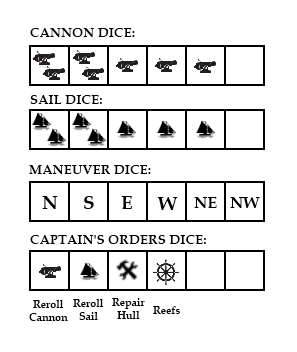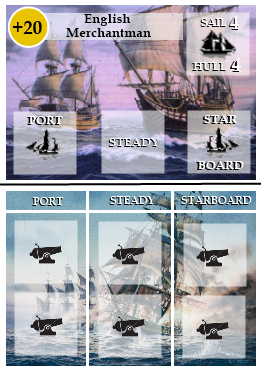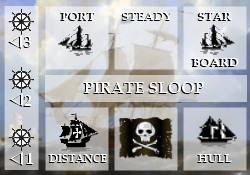To facilitate reading almost 40 entries this month, I am breaking them up into groups of 10. This thread is for entries 21-30.
Entry #25 World War Dice has been updated - pictures added (they had gone to my spam filter)
Entry #24 Dice Defense has been updated - formatting
Entry #30 Plunder on the Horizon - formatting















Gobble
A dice game for 2-6 players
Play time:
5-10 minutes
Contents:
36 dice
18 Cards
- 16 Target cards, numbered 2-17
- 2 Target cards, marked with an X
1 rule sheet
Object of the game:
The winner is the player with the most points at the end of the game.
Setup:
Shuffle the cards and place them in the center of the table. Each player is given six dice; any extra dice are put into the middle. These dice form the Pool.
Gameplay:
Each player chooses to roll between one and three dice and all players do so simultaneously. Once the dice are rolled, turn up the top card of the Target deck. The player whose dice total is nearest to the number revealed is Gobbled and has his or her rolled dice go to the Pool. If two or more players tie for closest, they all are Gobbled. All other players score the total of their rolled dice.
If any player rolls exactly the number revealed on the Target card, that player is safe and all other players are Gobbled instead. In addition, that player takes dice equal to the number he or she rolled that turn from the Pool.
In the event of an X being revealed, all players score and get a die from the Pool. In the event of there not being enough dice for everyone, dice are distributed to those with less dice first. If two players would qualify for the last die, it stays in the Pool. Note that this allows players who are out of dice get back in the game.
All cards should be left face up on the table in a line once revealed to allow for some Target card metagaming in the late game. This should influence whether that player rolls lots of dice to score more points per roll or less dice to avoid (or aim for) the remaining Target cards.
Ending the Game:
Whenever there is only one player left with dice, that player immediately scores 3 points for each remaining die and the game ends. If there are two or more players with dice remaining after the last Target card is revealed, they all score 3 points for each remaining die and the game ends.
A Note:
As this game is very simple and abstract, but has elements of stealing and being caught, it can easily be prodded into themes such as rival cat burglars, pirates, Viking raiders, the Mongol hordes, or anything of the sort simply by renaming the Target cards, the Pool, and the act of being Gobbled.